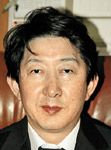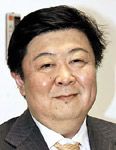Article
Early cataract extraction at 60 years or older is justified
Fukuoka, Japan-Extraction of cataracts that develop early in patients who are 60 years of age or older may be justified when the results of a recent study of accommodation are considered. The investigators found that the amplitude of apparent accommodation is almost the same as that of normal accommodation in these patients, according to Ken Hayashi, MD.

"The amplitude of apparent accommodation decreases with aging, but the decrease is less than that of normal accommodation," Dr. Hayashi stated. "Therefore, it is conceivable that the amplitude of apparent accommodation becomes equivalent to the amplitude of normal accommodation in older patients."
Dr. Hayashi, director, Hayashi Eye Hospital, Fukuoka, Japan, and colleague Hideyuki Hayashi, MD, conducted a study in which the amplitude of apparent accommodation in eyes with monofocal IOLs implanted was compared with the phakic fellow eyes that had normal accommodative function in various age groups. The authors reported their findings recently in the journal Eye (2006;20: 290-296).

The patients were categorized by age. Twenty patients were in their 40s or younger; 30 were in the 50s; 30 were in the 60s; 30 were in the 70s; and 20 were in the 80s.
The investigators used an accommodometer to measure the average amplitude of accommodation about 1 month after the patients underwent cataract extraction. The corneal astigmatism and the sizes of the pupils also were evaluated.
"The amplitude of normal accommodation decreased significantly (p <0.0001) in relation to age, while at the same time the decrease in the amplitude of apparent accommodation was only slight (p = 0.0380)," he reported.
When the investigators compared the phakic eyes and the pseudophakic eyes, they found that in the patients who were in their 40s and younger and in the patients who were in their 50s the amplitude of apparent accommodation was significantly less than that of normal accommodation. In the older patient groups, the amplitude of accommodation was similar when the pseudophakic and phakic eyes of each patient were compared, Dr. Hayashi said.
"The incidence of the patients in whom the amplitude of apparent accommodation was more than that of normal accommodation was greater in the patients in their 60s, 70s, and 80s than in the patients in their 40s and younger and in their 50s. In the groups of patients who were in their 60s, 70s, and 80s, the incidence was about 50%," he reported.
These results suggested, according to Dr. Hayashi, that about half of the patients who were older than age 60 years have bilaterally equal accommodative power, if one eye is pseudophakic.
In addition, the pupil size and the corneal astigmatism are related to the amplitude of apparent accommodation, according to Dr. Hayashi. When the investigators compared the pupil diameters, the diameters tended to be smaller in the pseudophakic patients than in the phakic patients, but the difference in size did not reach significance in this series.
When the investigators compared the degree of corneal astigmatism between the pseudophakic and phakic patients, they found that the astigmatism in those who were older than 50 years was similar, he said.
"Smaller pupil size and a higher degree of corneal astigmatism have been reported to be associated with increased amplitude of apparent accommodation. Therefore, these results indicated that our findings regarding accommodation were not due to pupil size or corneal astigmatism," he stated.
"The amplitude of apparent accommodation is equivalent to normal accommodation in patients who are older than 60 years. This finding may justify extracting early-stage cataracts in these patients when accommodation is a consideration," Dr. Hayashi concluded.




